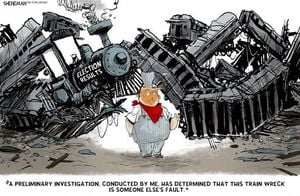In a world where the threat of nuclear war once seemed to be receding into the pages of history, recent events and cultural reflections are forcing the global community to confront a sobering reality: the nuclear danger is not only back, but it may be worse than ever. As highlighted in the annual 2025 SIPRI report, the international landscape is witnessing a resurgence of nuclear ambitions, with more countries considering the development or hosting of nuclear weapons. This comes at a time when the arsenals of nuclear-weapon states are not only being enlarged but also modernized, while the painstaking efforts at arms control that once offered hope have come to a grinding halt.
This renewed anxiety is not confined to policy circles or think tanks. On November 2, 2025, Kathryn Bigelow’s new film, A House of Dynamite, premiered to audiences worldwide, delivering a chilling message about the persistent—and worsening—threat of nuclear war. The film opens with a stark declaration: “At the end of the Cold War, global powers reached the consensus that the world would be better off with fewer nuclear weapons. That era is now over.” According to the Los Angeles Times, Bigelow’s film is unsettling and intense, envisioning how millions could be wiped out in a single morning, and serves as a wake-up call for a public that has largely tuned out the nuclear conversation.
Indeed, the absence of arms control is palpable. The United States recently announced its intention to resume nuclear testing, a move widely interpreted as a response to Russia’s claim of testing a long-range, nuclear-powered cruise missile. Just last week, the United Nations General Assembly’s First Committee adopted a resolution on the Comprehensive Nuclear-Test-Ban Treaty. In a historic first, the US voted 'no,' signaling a dramatic shift in its longstanding approach to nuclear nonproliferation, as reported by Dawn.
Serhii Plokhy’s newly published book, The Nuclear Age: An Epic Race for Arms, Power and Survival, arrives at a time when such warnings feel especially urgent. Plokhy examines why nations have sought nuclear weapons, concluding that fear—whether rational or irrational—is the decisive motivator. “Fear of nuclear attack by another state or of superior conventional forces possessed by an adversary” is, in his view, paramount. He traces how this fear has driven both the arms race and, paradoxically, efforts at arms control, such as those that briefly flourished between the US and the Soviet Union in the late 20th century.
Yet, as Plokhy and the 2025 SIPRI report both observe, today’s world is far less regulated and far more dangerous. The Russian invasion of Ukraine, for example, has not only involved attacks on nuclear installations but has been accompanied by threats of nuclear weapon use against a non-nuclear state—an escalation that raises the specter of nuclear catastrophe in ways not seen since the darkest days of the Cold War. Meanwhile, the US and Israel’s attacks on Iran’s nuclear sites add another layer of peril, showing that even NPT-member states are not immune to the violence of nuclear-armed rivals.
Hollywood, which for decades shied away from the nuclear conversation, has re-entered the fray with Bigelow’s film. As the Los Angeles Times notes, A House of Dynamite is not a technical manual for military experts, but a warning for everyone else. It raises uncomfortable questions about presidential authority, chain of command, disaster planning, and the rapidly evolving technology that underpins modern nuclear arsenals. The film also scrutinizes the Trump administration’s push for a “Golden Dome” missile defense system, a program whose scientific reliability is very much in question. Experts caution that even a highly effective missile defense would not guarantee safety, since adversaries could simply build more missiles or design them to evade interception—a strategy that Russia has already invested in.
China’s ongoing expansion of its nuclear forces further destabilizes the already shaky balance between the US and Russia, both of which are actively modernizing their own stockpiles. Against this backdrop, some non-nuclear states are now openly considering whether they, too, should acquire nuclear weapons. The lesson drawn by many is that, in a world where the threat or use of force is increasingly the first resort, nuclear weapons are the ultimate guarantee of sovereignty and survival. According to Dawn, both Iran and Ukraine—attacked by nuclear powers—have become case studies in the vulnerabilities of non-nuclear states.
This trend is deeply troubling to experts and former officials alike. As former Secretary of Defense William Perry warned, leaders are “sleepwalking” into a new nuclear arms race. The consequences could be catastrophic: Plokhy’s book warns that the world may see as many as 40 additional nuclear-armed countries if current trends continue, dramatically increasing the risks of both intentional and accidental nuclear use.
The historical record reveals just how quickly the nuclear club has grown. Israel, with French and British assistance, acquired nuclear weapons capability in the late 1960s and early 1970s. India’s nuclear tests in 1974 and 1998 were motivated by a combination of security concerns—particularly competition with China—and a desire for great-power status. Pakistan’s pursuit of nuclear weapons was driven by the trauma of its 1971 military defeat and the subsequent Indian test, leading to a strategic conclusion that only nuclear arms could guarantee its security. North Korea, meanwhile, joined the nuclear club by 2006, and Iran continues to pursue its own program despite facing repeated attacks and international pressure.
Despite these grim developments, there is evidence that progress is possible. The global nuclear weapons stockpile has fallen from nearly 70,000 at the height of the Cold War to an estimated 13,000 today, a reduction achieved through sustained dialogue, political will, and public engagement. As Los Angeles Times contributors Jerry Brown and Alexandra Bell argue, “The only real way to protect this country — and the world — from nuclear war is through fearless diplomacy.” They stress that building trust among leaders of nuclear-armed states, however naive it may seem, is essential. Every serious reduction in nuclear threats has been driven by public pressure, from mothers opposing atmospheric testing to mass protests demanding a freeze on nuclear production.
Yet, complacency is not an option. The current era is defined by a dangerous mix of technological innovation, geopolitical rivalry, and eroding norms. Forever threatening nuclear attack and assuming that nothing will ever go wrong is, as the Los Angeles Times puts it, “reckless.” The public must reengage with the nuclear debate, asking tough questions of leaders and demanding accountability. As Bigelow’s film starkly warns, if the world doesn’t change course, the nightmare scenario it depicts could become reality.
The stakes could hardly be higher. As fear continues to drive nations toward the bomb, the need for renewed diplomacy, public engagement, and a collective re-learning of the lessons of the nuclear age has never been more urgent.




